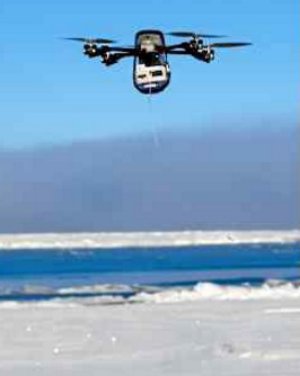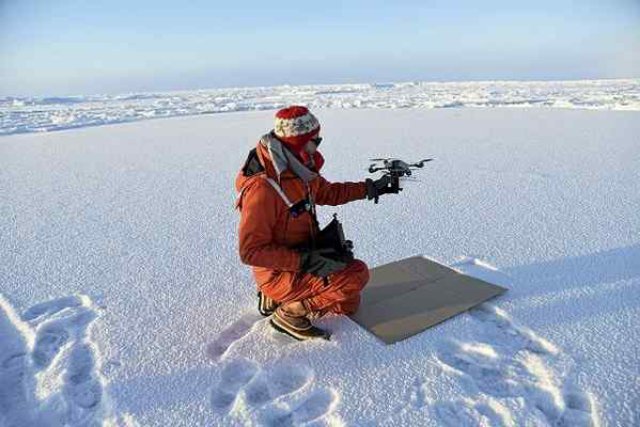Naval Postgraduate School polar meteorologist and professor Peter Guest spent more than 40 days late last year as the only scientist from NPS in a group from the U.S. and other countries researching the region’s receding ice cover. It’s a part of the world the United States and other nations are showing great interest in.
Russia renewed its claim to a United Nations committee on the Arctic, a region potentially rich in mineral resources, which the U.S., Canada, Denmark and Norway are also laying claim to.
“The Arctic region is peaceful, stable and free of conflict. The United States and its Arctic allies and partners seek to sustain this spirit of trust, cooperation and collaboration, both internationally and domestically,” President Barack Obama said in the 2013 National Strategy for the Arctic Region.
The scientists were on a voyage sponsored by the Office of Naval Research to investigate how receding ice has changed sea conditions and for the first time from a ship, Guest flew his InstantEye UAV (unmanned aerial vehicle), or drone, over the ocean and ice, taking meteorological measurements.
“The arctic, in recent years, has much less sea ice in it, particularly at the end of summertime,” said Guest. “It used to be pretty much the entire Arctic ocean would be frozen solid, all summer long and maybe just melt a little bit around the edges. But now in the last 15 or 20 years … there are large areas of open water,” he said. “There never used to be large waves in the Arctic because the ice covered up the ocean.”
Scientists don’t know yet how the waves affect the ice. “If you have a lot of waves, are they breaking up the ice or making the ice melt faster than it would normally?” Guest asked.
 Guest gave a presentation recently to the NPS CRUSER group, an acronym for Consortium for Robotics and Unmanned Systems Education and Research.
Guest gave a presentation recently to the NPS CRUSER group, an acronym for Consortium for Robotics and Unmanned Systems Education and Research.
Climate change is suspected for ice loss, enhanced by Arctic physics. “We think it’s due to more CO2 in the atmosphere,” said Guest. “Because there is snow there it’s particularly susceptible to changes in climate.”
Typically Arctic ice and snow reflect about 60 percent of solar radiation but it can be as much as 90 percent. “When you get rid of that then … the ocean absorbs most of the energy and the same with land,” said Guest.
With “just a little bit of warming say due to more CO2 in the atmosphere … you’ve got much more heating because it’s absorbing much more solar radiation,” said Guest.
As Guest flew the drone in temperatures as cold as minus-8, others stood by with lethal and nonlethal firearms while two shipboard scientists used binoculars to search for polar bears. Guest saw bears on four occasions.
The research could help in large-scale climate prediction models. The drone flew over “leads,” or small ice cracks. “These UAVs are very good for measuring heat coming out of a lead, you can fly up and down wind and see the change in the heat.” The heat emitting from the cracks can cause temperature inversions affecting winds.
Helium for weather balloons is expensive and drones are cheap and easy to fly, said Guest. “I think there is a big future in using these UAVs to perform meteorological measurements.”
Guest would like to see all Navy aircraft carry weather sensors which could help predict how electromagnetic transmissions like radio and radar affected by atmosphere would perform.
While there is friendly cooperation with Russian scientists in the Arctic, its political importance is clear to the Navy, said Guest.
“In the back of their mind I know they are thinking now that we’ve got all this open water in the Arctic there’s going to be more surface ships, not just ice breakers but regular surface ships … operating in that region,” he said.
The Russians already fly drones in the Arctic with their armed forces, Jane’s Defense Weekly reported.
“The Navy in particular is definitely interested in the Arctic,” said Guest. Now the Navy is “not really very capable of operating in cold weather climates like that, they can’t keep the ships warm — there’s icing problems in the ships, we just don’t have the experience,” he said.
When the former Soviet Union existed, “the Arctic has been basically where World War III was going to take place … the Arctic was kind of the battleground area so of course the military was very interested in those days,” said Guest. Now many are interested.
Source: Mercury News

